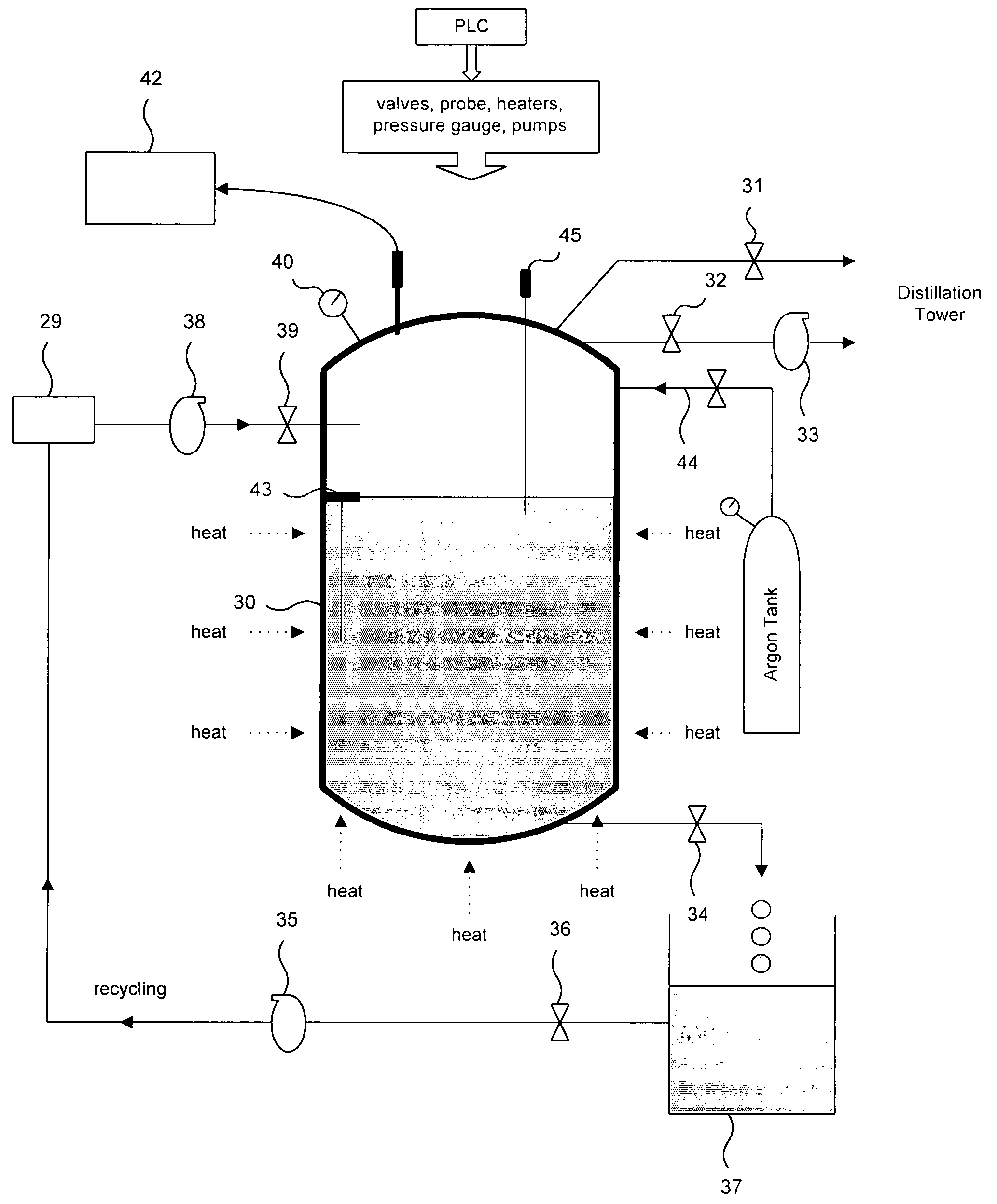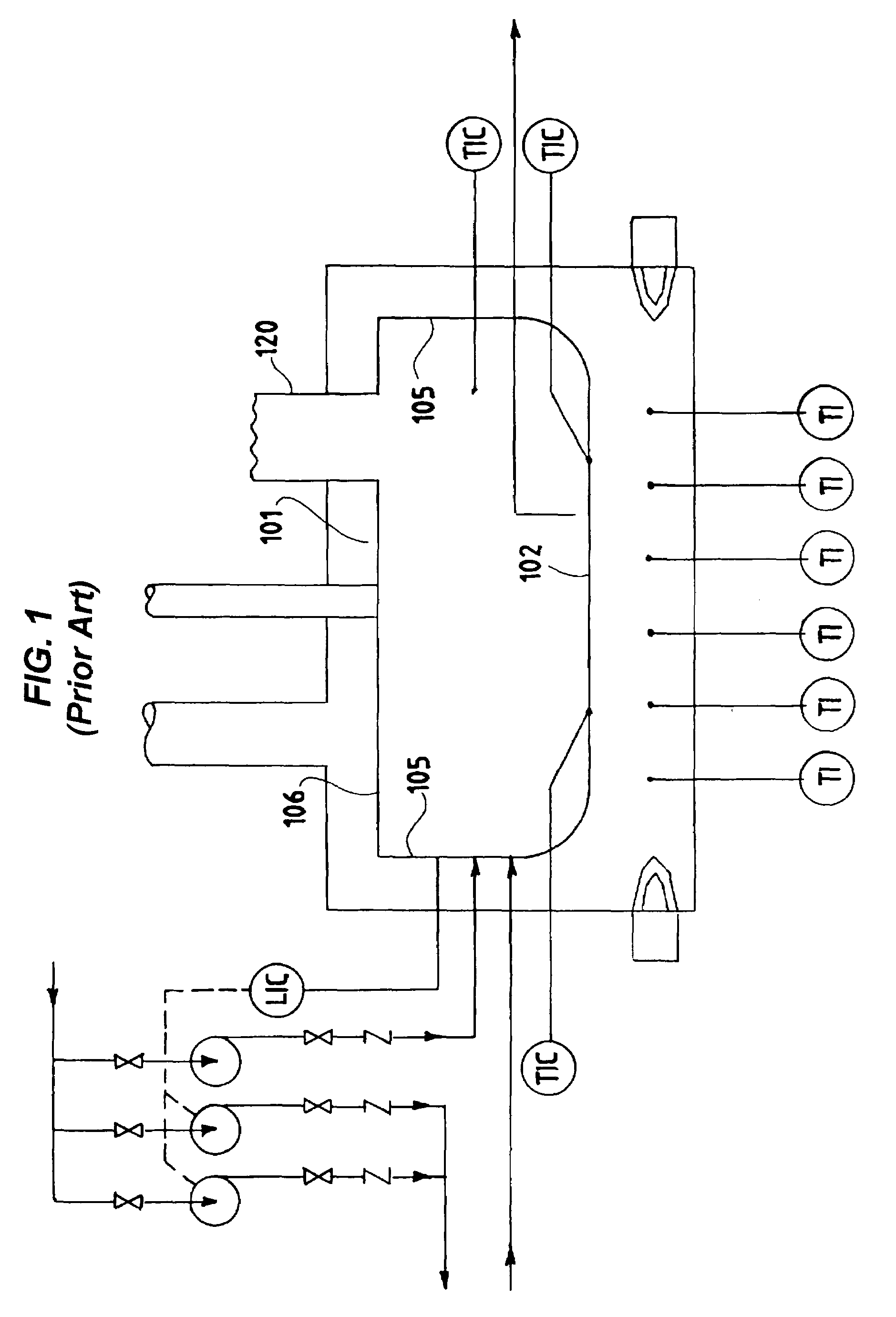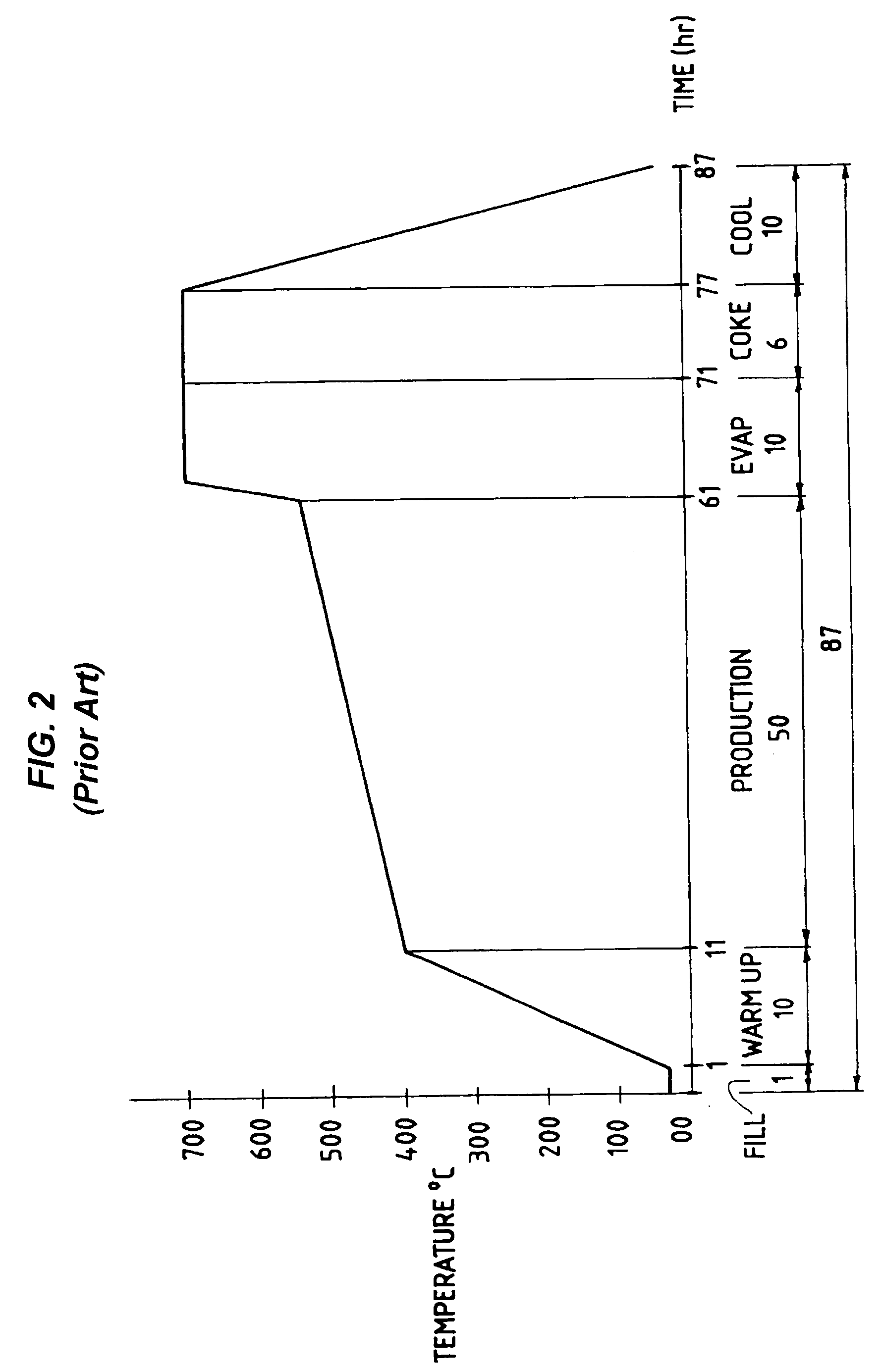Apparatus and process for treatment of waste oils
a waste oil and apparatus technology, applied in the field of apparatus and process for reclaiming fuel oils, can solve the problems of waste oil being frequently subject to thermal cracking, short hydrocarbons of low boiling point, and forming short hydrocarbons, etc., to accelerate the reaction time, accelerate the reaction rate, and accelerate the cracking process
- Summary
- Abstract
- Description
- Claims
- Application Information
AI Technical Summary
Benefits of technology
Problems solved by technology
Method used
Image
Examples
Embodiment Construction
[0021]Preferred embodiments will be described with reference to the accompanying drawings.
[0022]FIG. 3 shows an advanced process and an apparatus which employs pressure and vacuum conditions according to an embodiment of the present invention. Waste oils such as engine oil, metal cutting oil and hydraulic oils contain basically water, solvent and detergents when they are transferred to the oil cracking plant. The water is removed before oils are fed into a thermal cracking vessel 30. Before the oil is pumped, valves 31 and 32 close and a valve 39 opens. The water-free waste oil 29 within a waste oil tank 29 is fed into the thermal cracking vessel 30 using a high-pressure pump 38. The pressure pump 38 increases the pressure inside the vessel 30 up to 50˜100 psi at the same time the waste oil is pumped into the vessel 30. Then the vessel can be pre-pressurized again with argon 44 up to 200 psi depending on the circumstance. Heat is directly applied not only to the bottom of the vessel...
PUM
| Property | Measurement | Unit |
|---|---|---|
| pressure | aaaaa | aaaaa |
| temperature | aaaaa | aaaaa |
| temperature | aaaaa | aaaaa |
Abstract
Description
Claims
Application Information
 Login to View More
Login to View More - R&D
- Intellectual Property
- Life Sciences
- Materials
- Tech Scout
- Unparalleled Data Quality
- Higher Quality Content
- 60% Fewer Hallucinations
Browse by: Latest US Patents, China's latest patents, Technical Efficacy Thesaurus, Application Domain, Technology Topic, Popular Technical Reports.
© 2025 PatSnap. All rights reserved.Legal|Privacy policy|Modern Slavery Act Transparency Statement|Sitemap|About US| Contact US: help@patsnap.com



